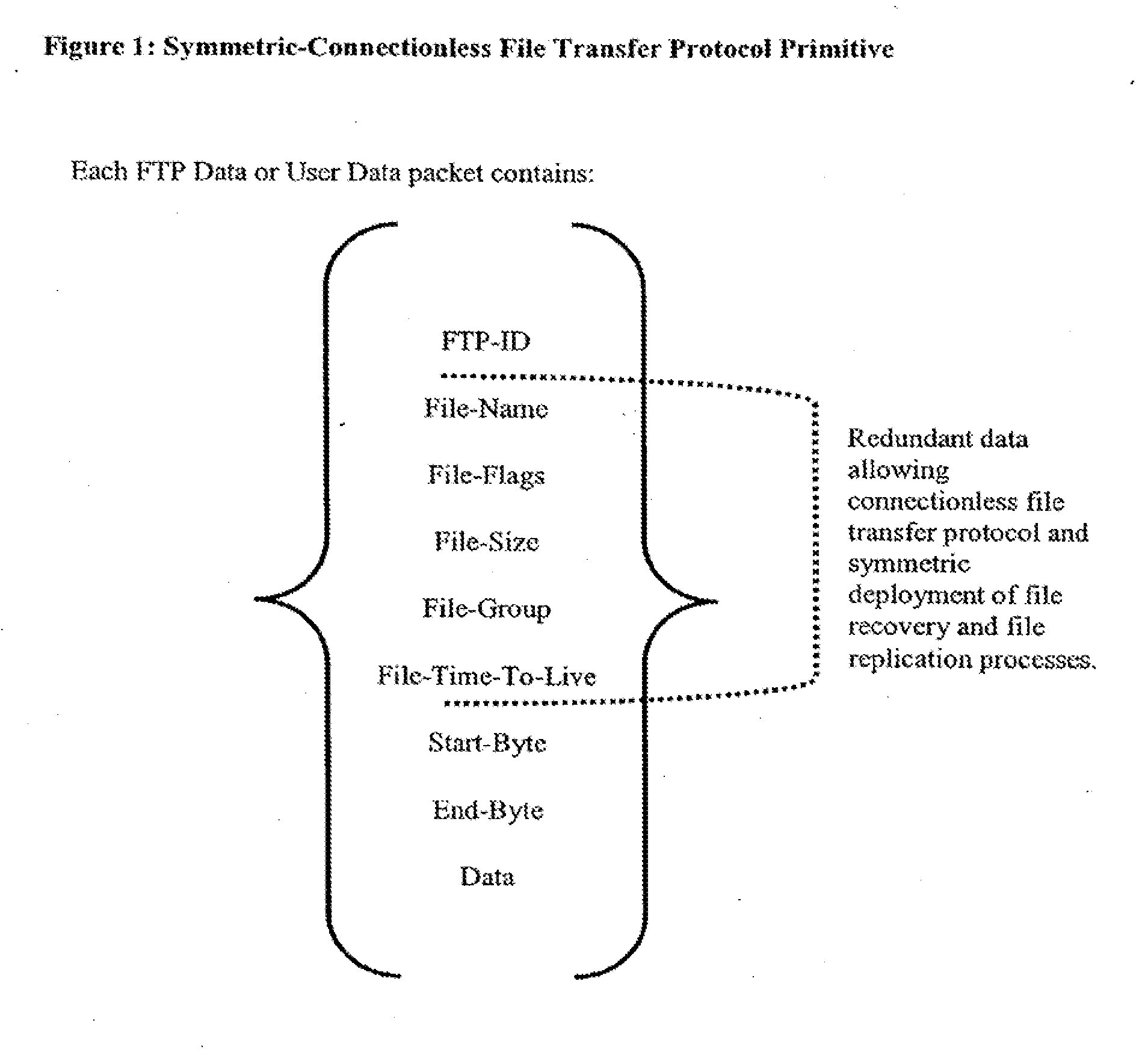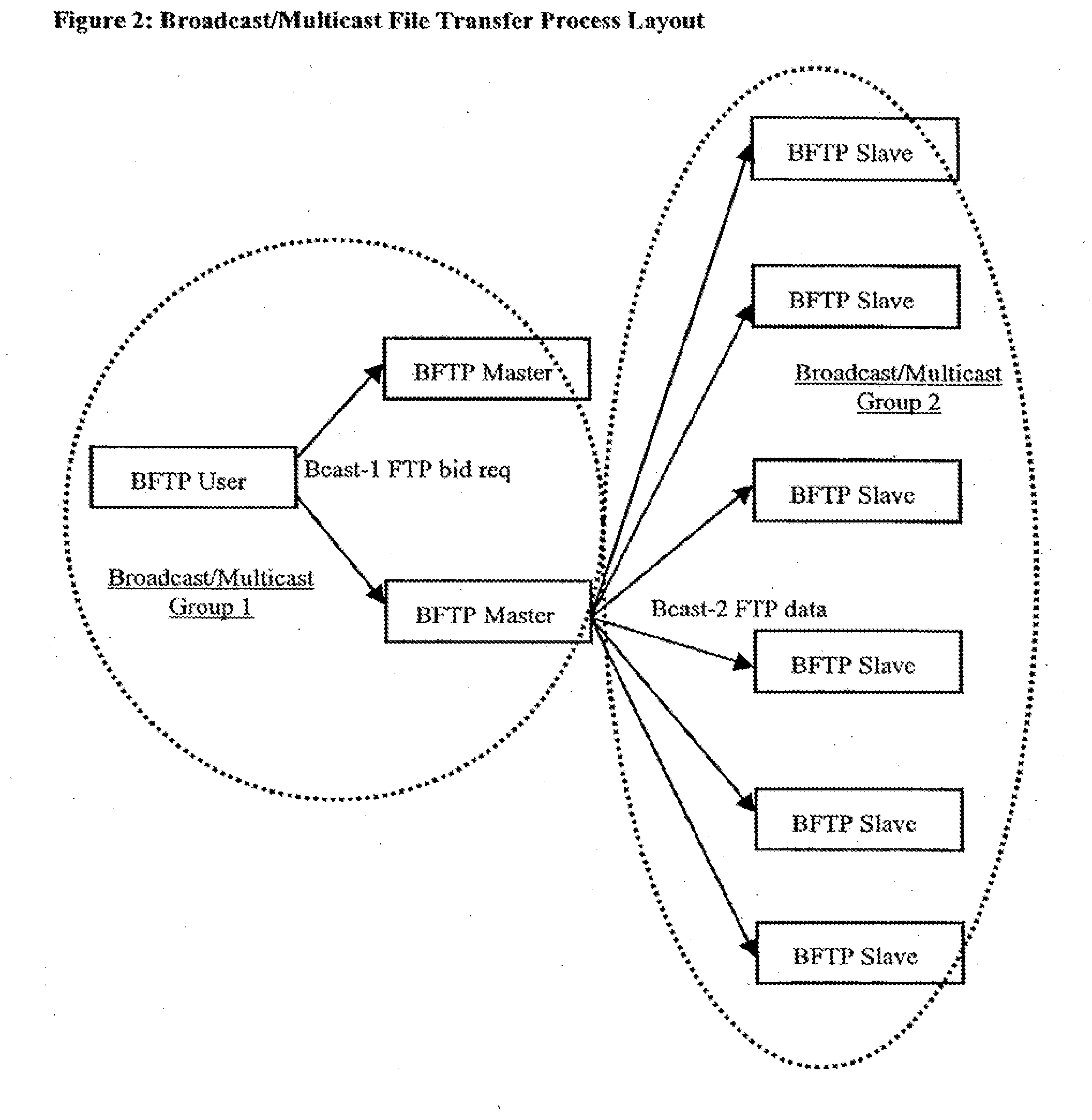Data Replication
a data replication and replication technology, applied in the field of data replication, can solve the problems of imposing an increased workload on the master file server node, imperfect apparatus form, limited network bandwidth usage, etc., and achieve the effect of allowing data replication scalability
- Summary
- Abstract
- Description
- Claims
- Application Information
AI Technical Summary
Benefits of technology
Problems solved by technology
Method used
Image
Examples
Embodiment Construction
[0049]FIG. 1 summarizes the protocol primitive used to implement the symmetric-connectionless file transfer protocol. This protocol primitive is said to be connectionless (i.e. redundant) because it contains all information required to perform a file transfer in every data packet exchange. Indeed file name, file flags, life span, file size, etc are duplicated in each data packet. This information redundancy consumes less than 5% of packet space (Ethernet MTU of 1500 bytes), but allows remote computers to easily “jump in” to any file transfer multicast phase without prior registration phase. Moreover, it allows simple and efficient error recovery and file synchronization for newly introduced nodes and out-of-order processing of data packets. The data transfer primitive is further said to be symmetric because it can be used by the master file transfer process (during the multicast transfer phase) or by any other participating nodes (for error recovery or file replication purposes).
[00...
PUM
 Login to View More
Login to View More Abstract
Description
Claims
Application Information
 Login to View More
Login to View More - R&D
- Intellectual Property
- Life Sciences
- Materials
- Tech Scout
- Unparalleled Data Quality
- Higher Quality Content
- 60% Fewer Hallucinations
Browse by: Latest US Patents, China's latest patents, Technical Efficacy Thesaurus, Application Domain, Technology Topic, Popular Technical Reports.
© 2025 PatSnap. All rights reserved.Legal|Privacy policy|Modern Slavery Act Transparency Statement|Sitemap|About US| Contact US: help@patsnap.com



